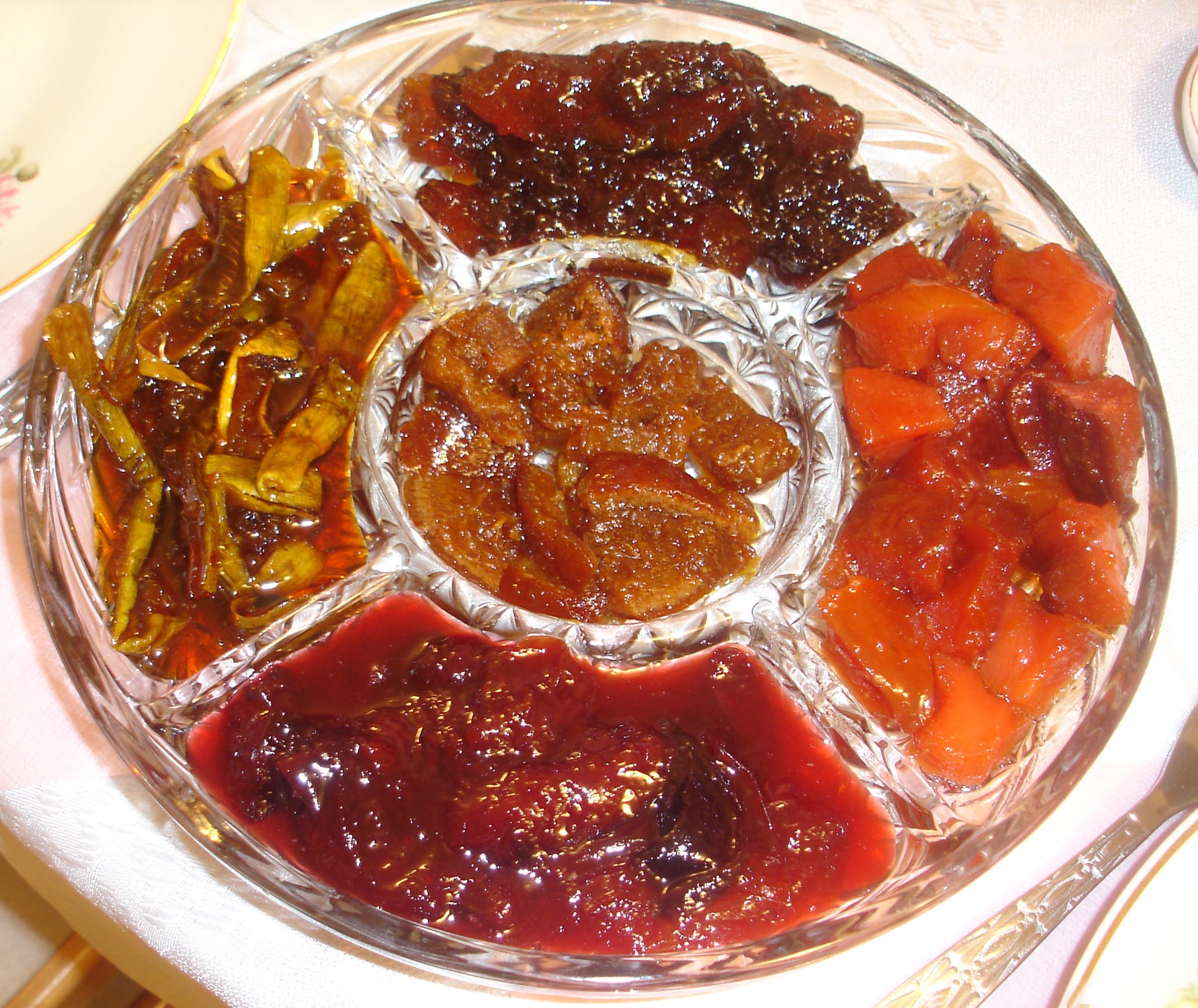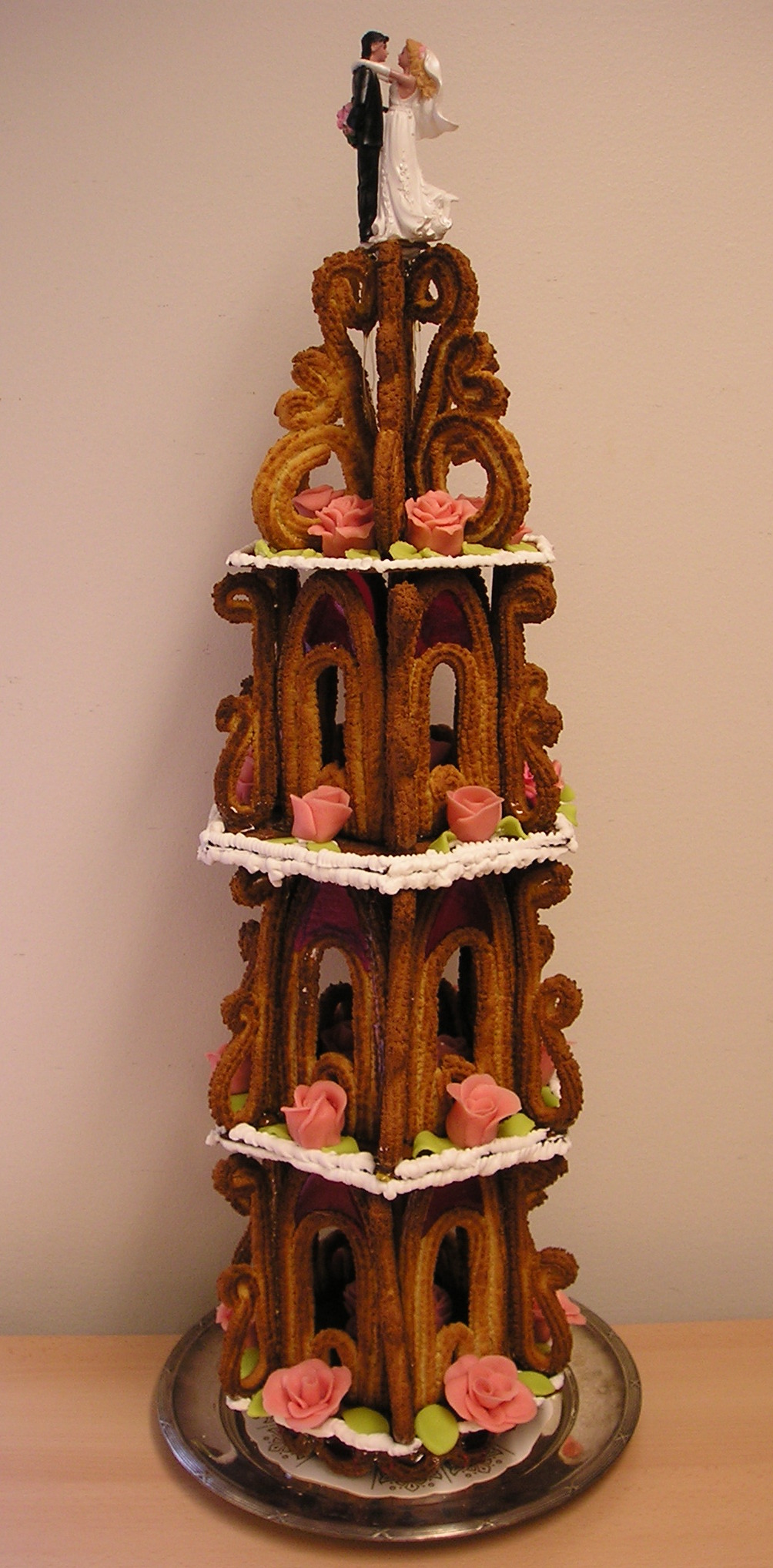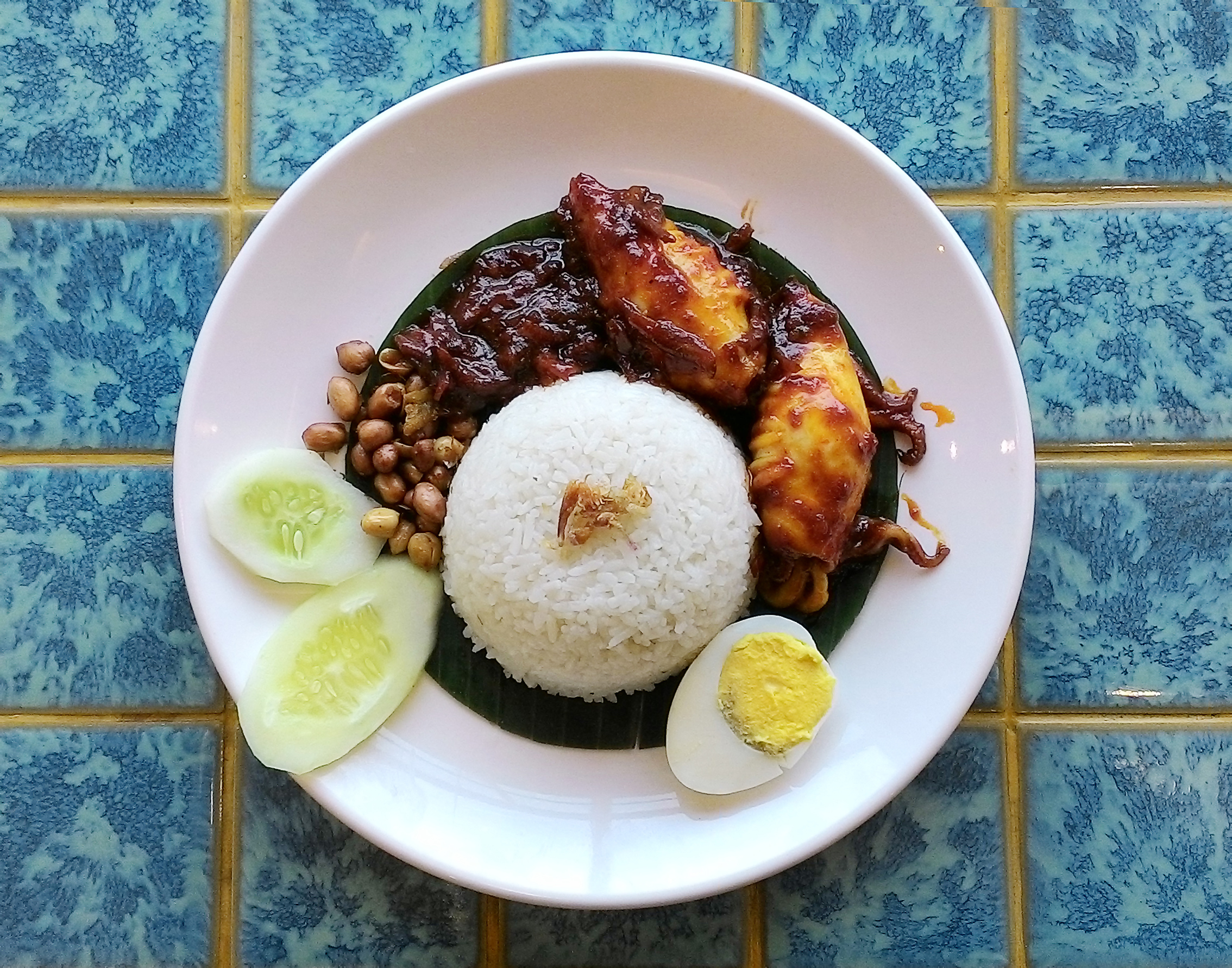|
Sericaia
is a Portuguese cuisine, Portuguese pudding similar to a soufflé, from Elvas, Alentejo. It is often accompanied with stewed ''Claude_of_France#"Reine_Claude", Reine Claude'' plums grown in the region. History ''Sericaia'' is believed to have been influenced by Malay cuisine, Malay-Indo (and ), a result of the Portuguese exploration and colonization of Portuguese Malacca in the early 1500s. , in manuscripts written in the 1600s define it as a coconut custard. Constantino de Bragança, governor of Old Goa, Goa, Portuguese India is said to have brought the ''wikt:สังขยา#Etymology_2, seri kaya'' recipe back to Portugal in the 1500s where it was re-interpreted by the nuns in the convents and monasteries of Alentejo. Specifically in Elvas, at the convents of ''Nossa Senhora da Conceição'' and ''Santa Clara''. Cinnamon, another key ingredient in ''sericaia'', was also brought back from Asia in 16th century. Another interpretation suggests that it was the other way aro ... [...More Info...] [...Related Items...] OR: [Wikipedia] [Google] [Baidu] |
Conventual Sweet
Conventual sweets ( pt, Doçaria Conventual) are a typical part of the Portuguese cuisine and a generic term to a variety of sweets in Portugal. As the name implies, conventual sweets were made by nuns who lived in the Portuguese convents and monastery, monasteries. Starting in the 15th century, these sweets have since integrated in the Portuguese cuisine and in former Portuguese colonies. Conventual sweets have sugar, egg yolks and almond as ingredients of choice. History Conventual sweets have always been present in the meals that were served in the convents, but only from the 15th century, with the dissemination and expansion of sugar, did they reach notoriety. Sugar cane production was tried in the Algarve, followed by Madeira in the 15th century. At the time Portugal was one of the largest egg producers in Europe and the excess amount of egg yolks was initially thrown away or given to animals as food. With the expansion of the Portuguese empire and the large-scale arrival of s ... [...More Info...] [...Related Items...] OR: [Wikipedia] [Google] [Baidu] |
Portuguese Cuisine
The oldest known book on Portuguese cuisine, entitled ''Livro de Cozinha da Infanta D. Maria de Portugal'', from the 16th century, describes many popular dishes of meat, fish, poultry and others. ''Culinária Portuguesa'', by António-Maria De Oliveira Bello, better known as Olleboma; was published in 1936. Despite being relatively restricted to an Atlantic, Celtic sustenance, the Portuguese cuisine also has strong French and Mediterranean influences. The influence of Portugal's spice trade in the East Indies, Africa, and Americas is also notable, especially in the wide variety of spices used. These spices include '' piri piri'' (small, fiery chili peppers), white pepper, black pepper, saffron, paprika, clove, allspice, cumin, cinnamon Cinnamon is a spice obtained from the inner bark of several tree species from the genus ''Cinnamomum''. Cinnamon is used mainly as an aromatic condiment and flavouring additive in a wide variety of cuisines, sweet and savoury dishes ... [...More Info...] [...Related Items...] OR: [Wikipedia] [Google] [Baidu] |
Soufflé
A soufflé is a baked egg-based dish originating in France in the early eighteenth century. Combined with various other ingredients, it can be served as a savory main dish or sweetened as a dessert. The word soufflé is the past participle of the French verb ''souffler'' which means "to blow," "to breathe," "to inflate," or "to puff." History The earliest mention of the soufflé is attributed to French master cook Vincent La Chapelle, in the early eighteenth century. The development and popularization of the soufflé is usually traced to French chef Marie-Antoine Carême in the early nineteenth century. Ingredients and preparation Soufflés are typically prepared from two basic components: # a flavored crème pâtissière, cream sauce or béchamel, or a purée as the base # egg whites beaten to a soft peak The base provides the flavor, and the egg whites provide the "lift" or puffiness to the dish. Foods commonly used to flavor the base include herbs, cheese and vegetabl ... [...More Info...] [...Related Items...] OR: [Wikipedia] [Google] [Baidu] |
Coconut Milk
Coconut milk is an opaque, milky-white liquid extracted from the grated pulp of mature coconuts. The opacity and rich taste of coconut milk are due to its high oil content, most of which is saturated fat. Coconut milk is a traditional food ingredient used in Southeast Asia, Oceania, South Asia, and East Africa. It is also used for cooking in the Caribbean, tropical Latin America, and West Africa, where coconuts were introduced during the colonial era. Coconut milk is differentiated into subtypes based on fat content. They can be generalized into coconut cream (or thick coconut milk) with the highest amount of fat; coconut milk (or thin coconut milk) with a maximum of around 20% fat; and coconut skim milk with negligible amounts of fat. This terminology is not always followed in commercial coconut milk sold in western countries. Coconut milk can also be used to produce milk substitutes (differentiated as "coconut milk beverages"). These products are not the same as regul ... [...More Info...] [...Related Items...] OR: [Wikipedia] [Google] [Baidu] |
Fruit Preserve
Fruit preserves are preparations of fruits whose main preserving agent is sugar and sometimes acid, often stored in glass jars and used as a condiment or spread. There are many varieties of fruit preserves globally, distinguished by the method of preparation, type of fruit used, and place in a meal. Sweet fruit preserves such as jams, jellies, and marmalades are often eaten at breakfast with bread or as an ingredient of a pastry or dessert, whereas more savory and acidic preserves made from " vegetable fruits" such as tomato, squash or zucchini, are eaten alongside savory foods such as cheese, cold meats, and curries. Techniques There are several techniques of making jam, with or without added water. One factor depends on the natural pectin content of the ingredients. When making jam with low pectin fruits like strawberries either high pectin fruit like orange can be added, or additional pectin in the form of pectin powder, citric acid or citrus peels. Often the fruit will ... [...More Info...] [...Related Items...] OR: [Wikipedia] [Google] [Baidu] |
Confection
Confectionery is the Art (skill), art of making confections, which are food items that are rich in sugar and carbohydrates. Exact definitions are difficult. In general, however, confectionery is divided into two broad and somewhat overlapping categories: bakers' confections and sugar confections. The occupation of confectioner encompasses the categories of cooking performed by both the French ''Pâtissier, patissier'' (pastry chef) and the ''confiseur'' (sugar worker). Bakers' confectionery, also called flour confections, includes principally sweet pastries, cakes, and similar Baking, baked goods. Baker's confectionery excludes everyday Bread, breads, and thus is a subset of products produced by a baker. Sugar confectionery includes candies (also called ''sweets'', short for ''sweetmeats'', in many English-speaking countries), candied nuts, chocolates, chewing gum, bubble gum, pastillage, and other confections that are made primarily of sugar. In some cases, chocolate conf ... [...More Info...] [...Related Items...] OR: [Wikipedia] [Google] [Baidu] |
Malaysian Cuisine
Malaysian cuisine consists of cooking traditions and practices found in Malaysia, and reflects the multi-ethnic makeup of its population. The vast majority of Malaysia's population can roughly be divided among three major ethnic groups: Ethnic Malays, Malays, Chinese Malaysian, Chinese and Indian Malaysian, Indians. The remainder consists of the Dayak people, indigenous peoples of Sabah and Sarawak in East Malaysia, the Orang Asli of Peninsular Malaysia, the Peranakan and Eurasian creole communities, as well as a significant number of foreign workers and expatriates. As a result of historical migrations, colonisation by foreign powers, and its geographical position within its wider home region, Malaysia's culinary style in the present day is primarily a melange of traditions from its Malay, Chinese, Indian, Indonesian cuisine, Indonesian, Filipino cuisine, Filipino and indigenous Bornean and Orang Asli, with light to heavy influences from Arabian cuisine, Arab, Thai cuisine, T ... [...More Info...] [...Related Items...] OR: [Wikipedia] [Google] [Baidu] |
Custard
Custard is a variety of culinary preparations based on sweetened milk, cheese, or cream cooked with egg or egg yolk to thicken it, and sometimes also flour, corn starch, or gelatin. Depending on the recipe, custard may vary in consistency from a thin pouring sauce ('' crème anglaise'') to the thick pastry cream (''crème pâtissière'') used to fill éclairs. The most common custards are used in custard desserts or dessert sauces and typically include sugar and vanilla; however, savory custards are also found, e.g., in quiche. Custard is usually cooked in a double boiler ( bain-marie), or heated very gently in a saucepan on a stove, though custard can also be steamed, baked in the oven with or without a water bath, or even cooked in a pressure cooker. Custard preparation is a delicate operation, because a temperature increase of 3–6 °C (5–10 °F) leads to overcooking and curdling. Generally, a fully cooked custard should not exceed 80 °C (~17 ... [...More Info...] [...Related Items...] OR: [Wikipedia] [Google] [Baidu] |
Portuguese Malacca
Portuguese control of Malacca, a city on the Malay Peninsula, refers to the 130 year period (1511–1641) when it was a possession of the Portuguese East Indies. It was conquered from the Malacca Sultanate as part of Portuguese attempts to gain control of trade in the region. Although multiple attempts to conquer it were repulsed, the city was eventually lost to an alliance of Dutch and regional forces, thus entering a period of Dutch rule. History According to the 16th-century Portuguese historian Emanuel Godinho de Erédia, the site of the old city of Malacca was named after the malacca tree ('' Phyllanthus emblica''), fruit-bearing trees along the banks of a river called ''Airlele'' (Ayer Leleh). The Airlele river was said to originate from ''Buquet China'' (present-day Bukit Cina). Eredia cited that the city was founded by ''Permicuri'' (i.e. ''Parameswara'') the first King of Malacca in 1411. The capture of Malacca The news of Malacca's wealth attracted the at ... [...More Info...] [...Related Items...] OR: [Wikipedia] [Google] [Baidu] |
Portuguese Exploration
Portuguese maritime exploration resulted in the numerous territories and maritime routes recorded by the Portuguese as a result of their intensive maritime journeys during the 15th and 16th centuries. Portuguese sailors were at the vanguard of European exploration, chronicling and mapping the coasts of Africa and Asia, then known as the East Indies, and Canada and Brazil (the West Indies), in what came to be known as the Age of Discovery. Methodical expeditions started in 1419 along West Africa's coast under the sponsorship of prince Henry the Navigator, with Bartolomeu Dias reaching the Cape of Good Hope and entering the Indian Ocean in 1488. Ten years later, in 1498, Vasco da Gama led the first fleet around Africa to India, arriving in Calicut and starting a maritime route from Portugal to India. Portuguese explorations then proceeded to southeast Asia, where they reached Japan in 1542, forty-four years after their first arrival in India. In 1500, the Portuguese nobleman Pedro ... [...More Info...] [...Related Items...] OR: [Wikipedia] [Google] [Baidu] |
Coconut Jam
The coconut tree (''Cocos nucifera'') is a member of the palm tree family ( Arecaceae) and the only living species of the genus ''Cocos''. The term "coconut" (or the archaic "cocoanut") can refer to the whole coconut palm, the seed, or the fruit, which botanically is a drupe, not a nut. The name comes from the old Portuguese word '' coco'', meaning "head" or "skull", after the three indentations on the coconut shell that resemble facial features. They are ubiquitous in coastal tropical regions and are a cultural icon of the tropics. The coconut tree provides food, fuel, cosmetics, folk medicine and building materials, among many other uses. The inner flesh of the mature seed, as well as the coconut milk extracted from it, form a regular part of the diets of many people in the tropics and subtropics. Coconuts are distinct from other fruits because their endosperm contains a large quantity of clear liquid, called ''coconut water'' or ''coconut juice''. Mature, ripe coconuts ... [...More Info...] [...Related Items...] OR: [Wikipedia] [Google] [Baidu] |
Malay Cuisine
Malay cuisine is the traditional food of the ethnic Malays of Southeast Asia, residing in modern-day Malaysia, Indonesia (parts of Sumatra and Kalimantan), Singapore, Brunei, Southern Thailand and the Philippines (mostly southern) as well as Cocos Islands, Christmas Island, Sri Lanka and South Africa. The main characteristic of traditional Malay cuisine is the generous use of spices. Coconut milk is also important in giving Malay dishes their rich, creamy character. The other foundation is '' belacan'' (prawn paste), which is used as a base for , a rich sauce or condiment made from , chilli peppers, onions and garlic. Malay cooking also makes plentiful use of lemongrass and galangal. Nearly every Malay meal is served with rice, which is also the staple food in many other Asian cultures. Although there are various types of dishes in a Malay meal, all are served at once, not in courses. A typical meal consists of a plate of rice for each person on the table. Dishes are m ... [...More Info...] [...Related Items...] OR: [Wikipedia] [Google] [Baidu] |
.jpg)

.jpg)




.jpg)


